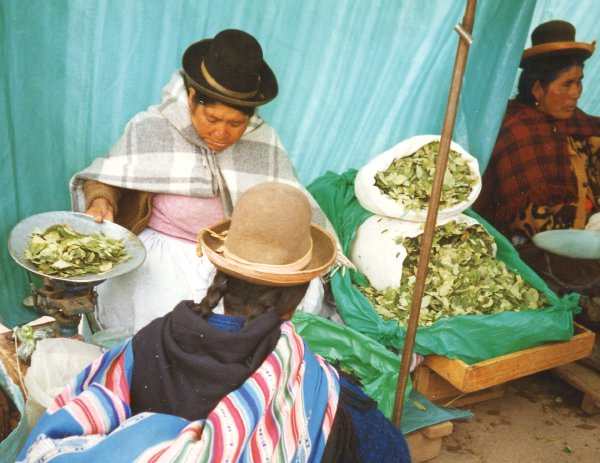

More local goods.
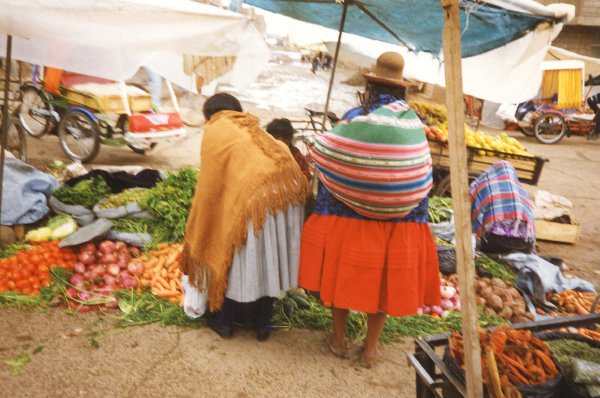
The Titicaca lake, or sea as some refer to it, is the world's highest lake navigable to large vessels, lying at 3,810 meters above sea level in the Andes mountains, astride the border between Peru to the west and Bolivia to the east. Titicaca covers some 8,300 square km and extends in a northwest-to-southeast direction for a distance of 190 km.
On the largest island on Titicaca ruins of a temple mark the spot where the legendary founders of the Inca dynasty, Manco Capac and Mama Ocllo, emerged from the depths of Lake Titicaca to found their empire. According to the Inca mythology, they were children of the Sun.
You can see the lake on the photo below, at the horison, behind the valley.
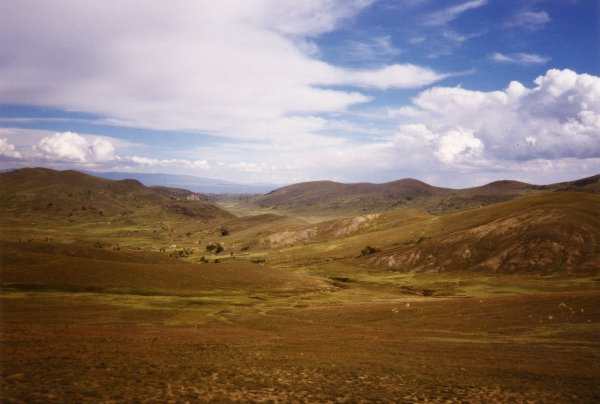
The remnants of an ancient people, the Uru, still live on Titicaca on floating mats of dried totora. Totora is a reedlike papyrus that grows in dense brakes in the marshy shallows. From the totora, the Uru and other lake dwellers also make their famed balsas--boats fashioned of bundles of dried reeds lashed together that resemble the crescent-shaped papyrus craft pictured on ancient Egyptian monuments.
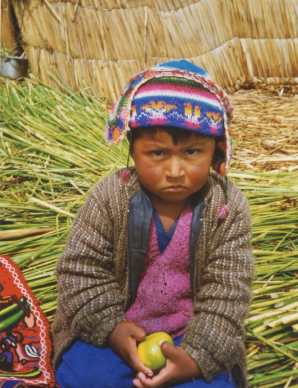
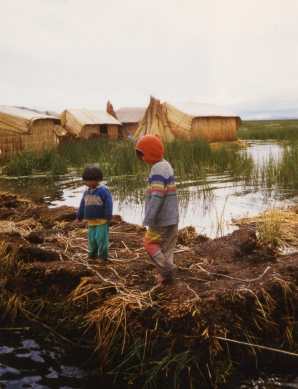
This is an indigenous community of some 350 families which continues to live within the traditions of the 14th century. People keep the three golden rules of the Inca empire: ama suwa, ama quella, ama llulla -- do not steal, don't be idle, and do not lie.
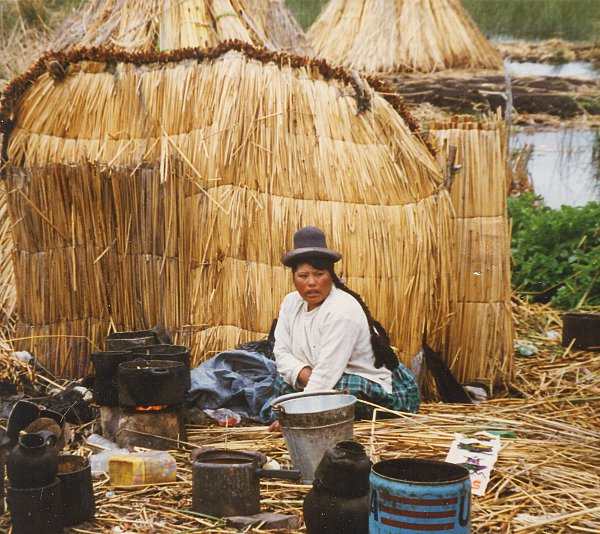
I was fascinated how these people manage to produce a sufficient amount of potatoes and meat from these wet, floating mini-islands. The man on the left photo was getting ready to hunt on some water birds.
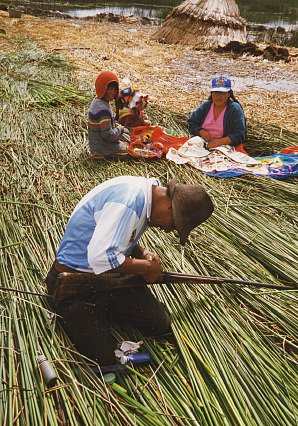
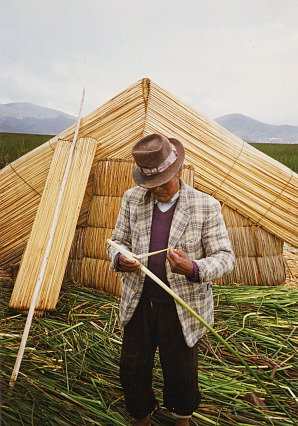
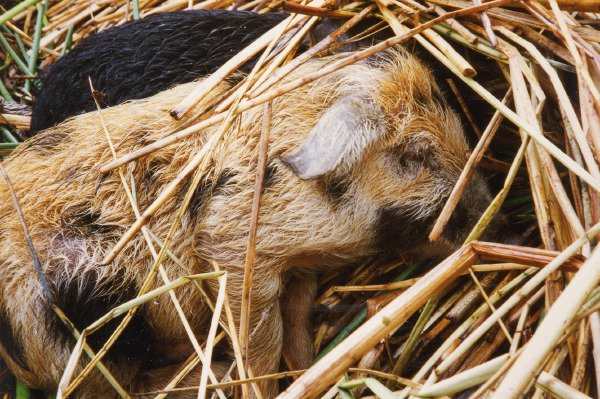
They even had a school on this tiny floating island. These children sang us a song. We gave them oranges.
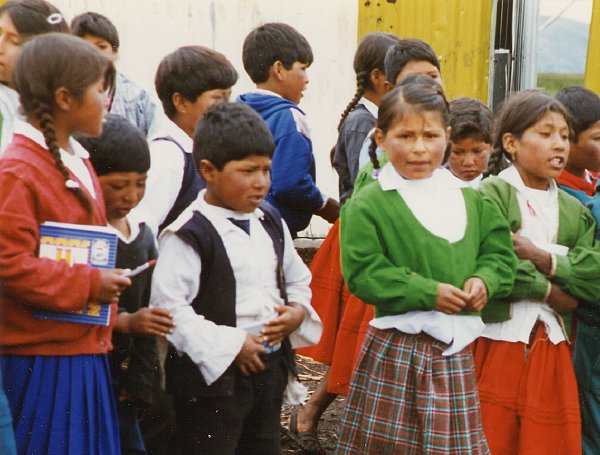
We drove along the shores of Titicaca to Bolivia. All the time we could see the lofty snow-capped peaks along its far shores. Several of these rise 8000 meters above sea level. Even though we were driving at an altitude of 3800 meters, it was all too easy to forget how high an altitude we were at, because the weather is so pleasant and the countryside so green.
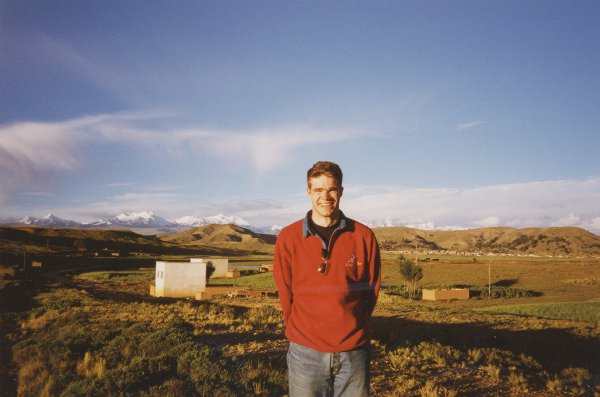
We stopped in a small Bolivian town called Copacabana, where we visited a cathedral built for the famous Virgin of Copacabana.
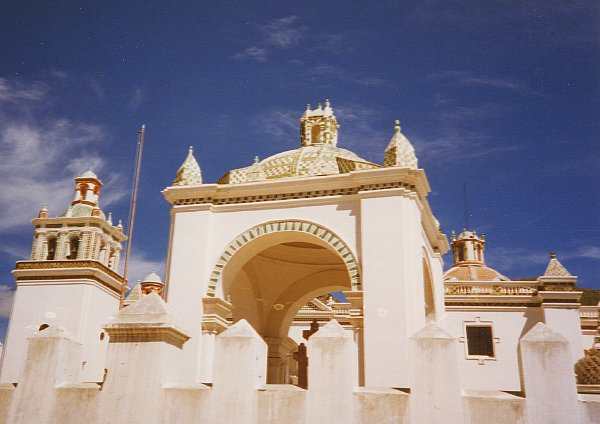
A beggar in front of the cathedral entrance.
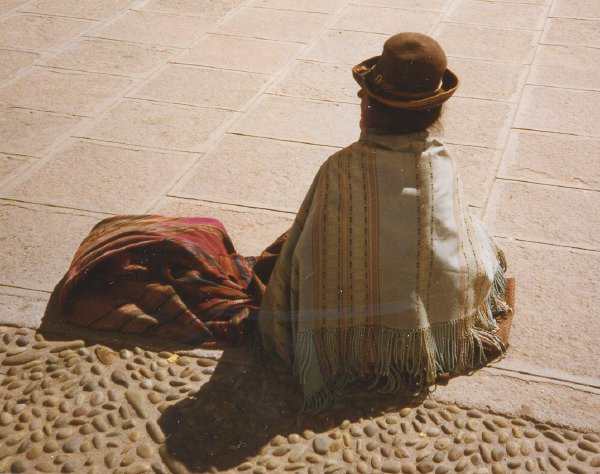
A striking contrast, I thought.
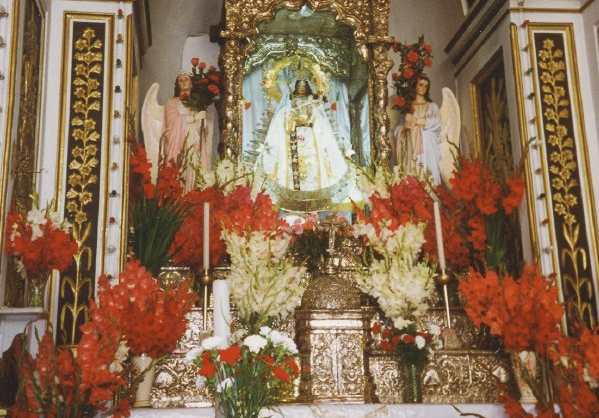
From here we drove on to La Paz, the capital of Bolivia. La Paz had a great atmosphere, with many Indians in their traditional clothing on the streets, and a busy lifestyle.
In La Paz our host Jon took us to an unforgettable visit to the city's homeless children. These kids have found a refuge and shelter in the city's sewage canals. Most of the year La Paz is lovely and warm during daytime, but at night, because of the 4000 meter altitude, the temperature falls sharply, and it is impossible to sleep out on the streets. A charity project that Jon was involved in was building two houses for some of these children.





|
page 4 of 6
Silvija Seres